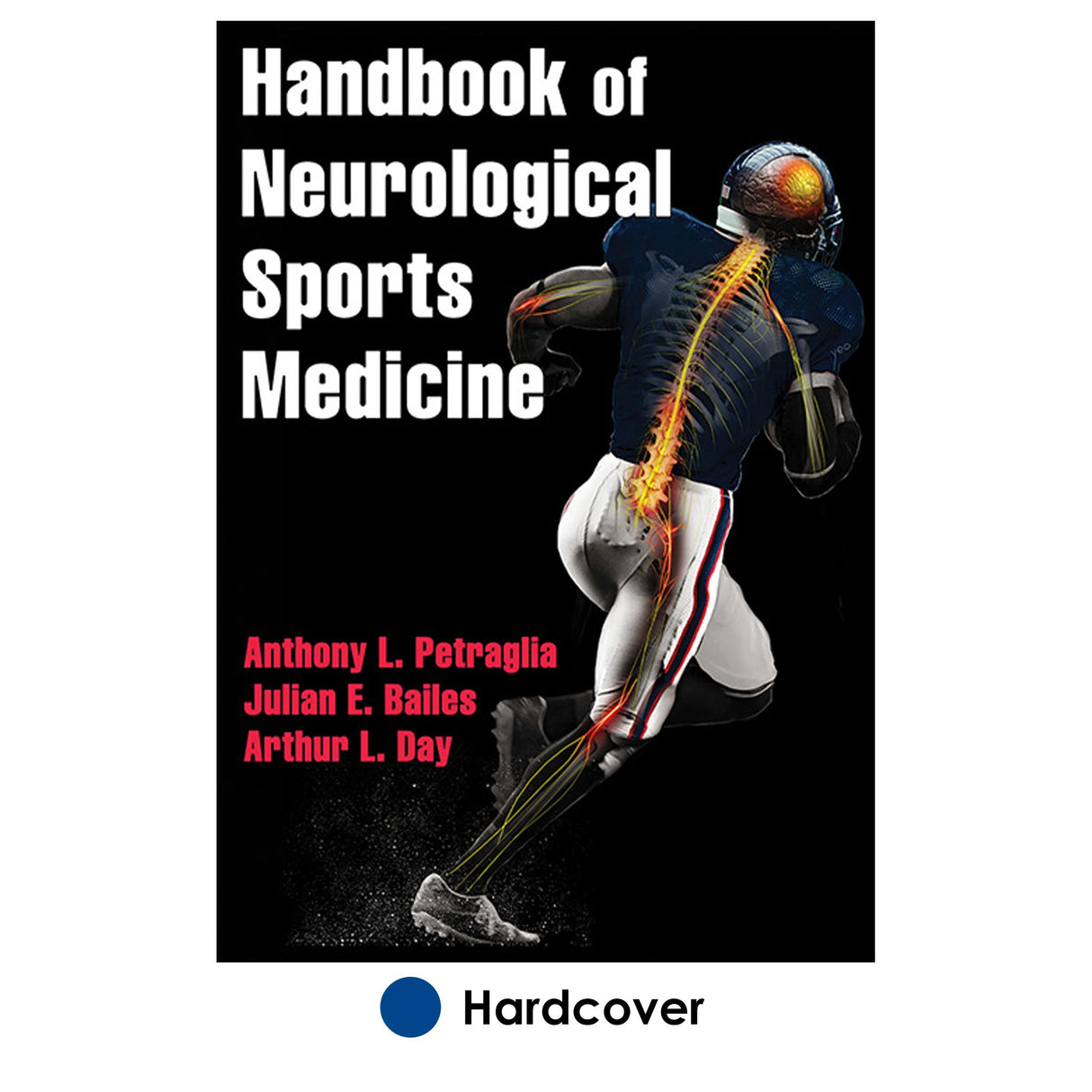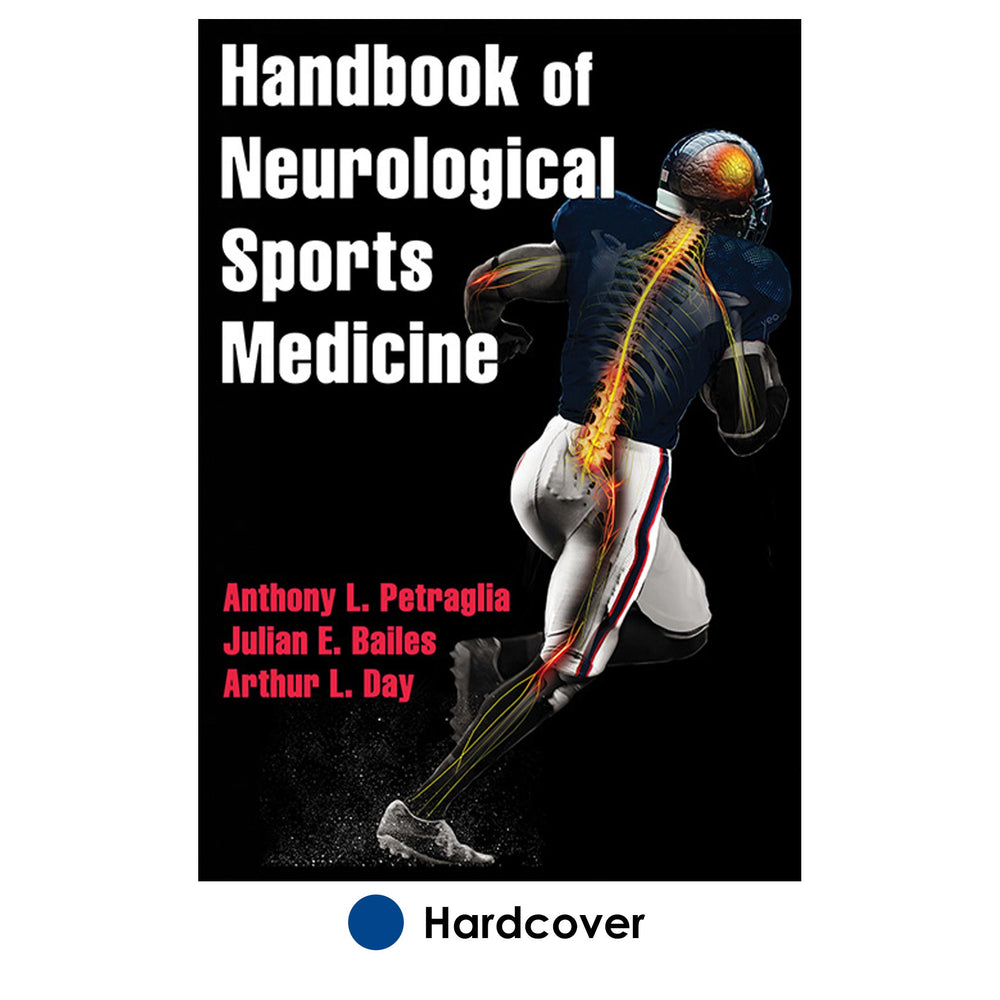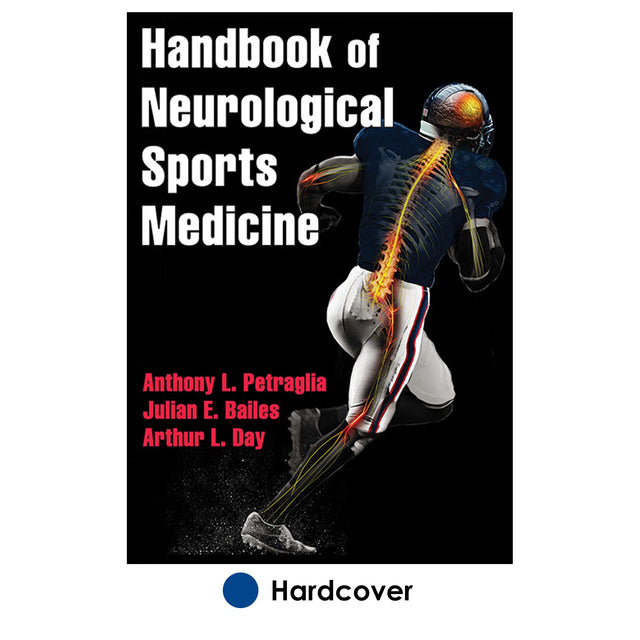Handbook of Neurological Sports Medicine
Concussion and Other Nervous System Injuries in the Athlete
$99.00 USD
Handbook of Neurological Sports Medicine: Concussion and Other Nervous System Injuries in the Athlete presents techniques for diagnosis and treatment of head-related injuries to enable medical professionals to provide the best care possible. Authored by a respected team of neurosurgeons, including highly regarded concussion researcher Julian Bailes, this evidence-based reference offers expert guidelines for managing these serious injuries.
A strong focus is placed on concussion due to the risk involved with this common injury. The text outlines how to recognize, assess, and treat concussions, preparing practitioners to calmly respond to athletes who are exhibiting signs of this dangerous condition. It also reviews the biomechanics and pathophysiology at the core of concussions to better understand their clinical presentations.
Critical return-to-play guidelines and participation recommendations for patients with preexisting neurological conditions or structural lesions arm medical professionals with the principles needed for making appropriate decisions for athletes’ safety. The text explains the roles of pharmacological management, natural treatment approaches, rehabilitation strategies, and education. In addition, chapters provide coverage of postconcussion syndrome, subconcussion, and second-impact syndrome.
Handbook of Neurological Sports Medicine also takes a look at other traumatic injuries, including injuries to the cervical, thoracic, and lumbar spine, and the soft tissue and fascia within the spinal unit. It provides an overview of peripheral nervous system injuries to ensure medical professionals understand those serious and potentially career-ending issues, reviews facets of optimal response with suspected or proven spinal injury, and discusses the evaluation and management of athletes with non-concussion-related headaches and heat illness or heatstroke. The text includes additional features to address issues surrounding critical injuries:
• Guidance on developing an action plan for athletic events prepares first responders for emergency situations.
• A review of cases of interest provides examples of situations that can—and do—occur.
• Medicolegal considerations educate practitioners about negligence, standard of care, and proximate cause.
• More than 150 photos and illustrations offer visual support to further explain the injuries.
The evaluation and management of sport-related neurological injuries have matured at an unprecedented rate. Handbook of Neurological Sports Medicine is a critical resource for all who encounter and treat neurological injuries, providing the foundation for the clinical decisions that all athletic medical practitioners must make to give their patients the best treatment possible.
Continuing education credits and units may also be earned based on the subject matter in this book. Explore online CE course options in Human Kinetics’ Continuing Education store.
Audience
Reference for professionals who may encounter neurological injuries in their athletes or patients, including athletic trainers, physical therapists, emergency medical technicians, and physicians, as well as students studying in these fields.
Part 1: General Concepts
Chapter 1. Athletes and Neurological Injuries: A View From 10,000 Feet
A Stroll Through History
The Present
Spectrum of Neurological Injury in Sports
Concluding Thoughts
References
Chapter 2. Medicolegal Considerations in Neurological Sports Medicine
With Increased Awareness Comes Increased Scrutiny
The King of Concussions
Negligence
Duty and Breach
Violation of a Statutory Duty
Standard of Care Defined by Experts
Standard of Care Established Through Literature, Rules, Protocols and Textbooks
Good Samaritan Laws
Proximate Cause
Assumption of the Risk
Theories of Negligence
Cases of Interest
NFL and NCAA Concussion Litigation Concluding Thoughts
References
Chapter 3. Having a Game Plan
Developing an Emergency Action Plan
Caring for Athletic Injuries Responsibilities of Host and Visiting Medical Staff
Concluding Thoughts
References
Part 2: Sport-Related Head Injuries
Chapter 4. Biomechanics, Pathophysiology, and Classification of Concussion
Biomechanics and Basic Concepts
Lessons Learned From Football
Lessons Learned From Other Sports
Pathophysiology of Concussion
Classification of Concussion and Grading Systems
Concluding Thoughts
References
Chapter 5. In the Trenches: Acute Evaluation and Management of Concussion
Presentation
Acute Evaluation
Concluding Thoughts
References
Chapter 6. Neuroimaging and Neurophysiological Studies in the Head-Injured Athlete
Standard Neuroimaging
Advanced Structural Techniques
Advanced Functional Techniques
Neurophysiological Techniques
Concluding Thoughts
References
Chapter 7. Neuropsychological Assessment in Concussion
Use of Symptom Checklists
Value of Neuropsychological Assessment of Concussion
Issues With Computerized Assessments
Other Considerations
Other Issues Addressed by Neuropsychologists in the Assessment of Concussed Patients
Concluding Thoughts
References
Chapter 8. Role of Balance Testing and Other Adjunct Measures in Concussion
Balance Assessment in Concussion
Emerging Technology and Future Directions for Adjunct Measures of Assessment in Concussion
Concluding Thoughts
References
Chapter 9. Postconcussion Syndrome
What’s in a Definition
Scope of the Problem
A Neuroanatomical Substrate for Prolonged Symptoms
Psychogenesis of PCS and PPCS
A Modern Conceptual Framework for PCS and PPCS
Concluding Thoughts
References
Chapter 10. Neuropathology of Chronic Traumatic Encephalopathy
Definition of Chronic Traumatic Encephalopathy
Posttraumatic Encephalopathy Versus Chronic Traumatic Encephalopathy
Gross Morphology and Histomorphology of Chronic Traumatic Encephalopathy
Concluding Thoughts
References
Chapter 11. The Emerging Role of Subconcussion
A Working Definition
Laboratory Evidence of Subconcussive Effects
Clinical Evidence of Subconcussion
Concluding Thoughts
References
Chapter 12. Severe Head Injury and Second Impact Syndrome
Cerebral Contusions and Intraparenchymal
Hemorrhage Traumatic Subarachnoid Hemorrhage
Subdural Hematoma
Skull Fractures
Epidural Hematoma
Diffuse Axonal Injury
Arterial Dissection and Stroke
Fatalities
Other Posttraumatic Sequelae
Second Impact Syndrome
Concluding Thoughts
References
Chapter 13. Neurological Considerations in Return to Sport Participation
History of Return to Play
Symptom Complex and Identification
Return to Play and Brain Abnormalities
Addressing and Resolving Return to Play Issues
Concluding Thoughts
References
Chapter 14. The Role of Pharmacological Therapy and Rehabilitation in Concussion
The Decision to Treat Pharmacologically
Somatic Symptoms
Sleep Disturbance Symptoms
Emotional Symptoms
Cognitive Symptoms
The Role of Rehabilitation in Concussion Management
Concluding Thoughts
References
Chapter 15. The Research Behind Natural Neuroprotective Approaches to Concussion
Eicosapentaenoic Acid and Docosahexaenoic Acid
Curcumin
Resveratrol
Creatine
Green Tea
Caffeine
Vitamins E and C
Vitamin D
Scutellaria baicalensis
Examples of Other Neuroprotective Nutraceuticals
Another Natural Approach: Hyperbaric Oxygen Therapy
Concluding Thoughts
Concluding Thoughts
References
Part 3: Sport-Related Injuries of the Spine and Peripheral Nervous System
Chapter 16. Cervical, Thoracic, and Lumbar Spine Injuries: Types, Causal Mechanisms, and Clinical Features
Background and Epidemiology
Normal Anatomy
Types of Tissue Injuries and Neurologic Syndromes
Common Cervical Injuries and Conditions
Common Thoracic Injuries
Common Lumbar Injuries
Concluding Thoughts
References
Chapter 17. Management of Spine Injuries, Including Rehabilitation, Surgical Considerations, and Return to Play
On-the-Field Assessment
Radiological Assessment
Treatment and Rehabilitation
Surgical Considerations
Cervical Spine Injuries and Their Management and Treatment
Cervical Spine Injury: Return to Play
Thoracic and Lumbar Spine Injuries and Their Management
Concluding Thoughts
Chapter 18. Peripheral Nerve Injuries in Athletes
Epidemiology
Pathogenesis
Clinical Evaluation
Additional Testing
Management Rationale
Surgical Options: Primary Nerve Surgery
Surgical Options: Secondary Surgery (Soft Tissue or Bony Reconstruction)
Postoperative Management and Return to Play
Legal Implications
Concluding Thoughts
References
Part 4: Other Sport-Related Neurological Issues
Chapter 19. Headaches in Athletics
Clinical Approach and Assessment
Commonly Recognized Headache Syndromes Coincidental to Sporting Activity
Prolonged Sporting Activity as a Trigger for Commonly Recognized Headache Syndromes
Primary Exertional Headache
Headaches Attributed to Head or Neck Trauma
Headaches Attributed to Sport-Specific Mechanisms
Concluding Thoughts
References
Chapter 20. Heat Illness in Sports
Background
Contributory Factors in Heat Illness
Prevention
The Spectrum of Heat Illness and Management
Return to Play
Concluding Thoughts
References
“…[T]he authors make detailed and potentially difficult study material easy to read and understand throughout.”
NATA News





